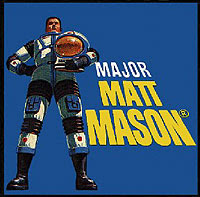 |
| 1969.11.28 Watertown NY Daily Times Page 2 |
 |
| 1969.11.28 Watertown NY Daily Times Page 27 Article "51% of Yule Toy Purchases Are Directed by Children" |
51% of Yule Toy Purchases Are Directed by Children
by Alexander Auerbach
The Los Angeles Times
Those letters to Santa are taking on a new look these days. Once it was a red bike, a rag doll or a blue scooter - nice and simple. Now it's "one Aurora wide-track raceway set. Sears catalog No. 79 C 95013C." or a "Major Matt Mason's space team," complete with a specific set of accessories including "Doug Davis with supernaut power-limbs."
Parents, frantically shopping their way toward the climax of their annual $3 billion toy-buying spree, are discovering that their children know exactly what it is they want from Santa - right down to brand, model number and the name of the nearest retail outlet.
John F. Waddle, national toy manager for Sears, Roebuck & Co., contends that 51 per cent of toy purchases are "directed by the child."
The companies which turn out the 500 million toys Americans buy each year - two-thirds of them during the Christmas season - nowadays get a chance not only to tell their young customers about their wares but show them how they work, as well.
Mattel Inc. of Hawthorne, Calif., one of the nation's largest toy companies, spent $14 million on advertising last year, according to industry sources, and will spend considerably more this year.
It doesn't always work. Mattel launched a toy last year called Strange Change that sold weakly until mid October, when it died altogether. A massive, costly TV ad campaign failed to revive it.
In general, successful toys are miniatures of real life. Children see cars, sewing machines, ovens and they want the same colors and styles they see in the adult world. As a consequence, dune buggies are more popular this year than fire engines and toy ovens are avocado green.
Toy manufacturers, aware of the demand for realism, work with their counterparts in the real world. Detroit supplies details of new cars, knowing that the publicity won't hurt and may even promote some sales of the real item, and doll fashions are up to the minute.
Even the costs of producing the toy versions parallel the production costs of the real items.
Toy cars require outlays for design, development, costly dies, tooling up and even occasional recalls, while doll production costs closely resemble those of the garment industry.
Since adults buy cars to use, children want toys they can use also. In Waddle's words, the successful toy must "involve" the youngster in play.
"American kids don't like spectator toys, where the toy performs and the kids just watch. Whether its driving the car, dumping the truck or dressing the doll, the kids. want to do it themselves. The more challenging and creative it is, the better."
Keeping up with children forces toymakers to stay at the peak of their technological skill.
To make its $35 Powerride X-1, Eldon Industries of Hawthorne, Calif., had to produce one of the largest plastic units ever turned out by injection molding, had to locate an electric motor that would drive the car for hours without overheating, and had to develop a wet-cell battery that would not spill its acid even if the car is kicked down a flight of stairs.
Toys generally are more complicated than they were a few years ago, Waddle, the Sears official, says, and this may lead to trouble. Modern toys with intricate mechanical and electronic parts do more, but have more that can go wrong.
Combine this greater potential for breakdown with the active, hard play that toys undergo, he says, and the result is a life expectancy shorter than the bill-paying parent might like.
Children themselves often contribute to the problem, he says. Today's greater affluence means they have more toys and take less care of them. Their parents, growing up in the 1930s and 40's, took better care of what few toys they had, Waddle says.
"Generally, quality has greatly improved over the past 15 years, but my five-year old nephew can still go through any toy made," he adds.
All Mattel images and captions are copyright
Mattel and used without permission. All other content, including images
and editorial, is Copyright © 1997-2024 John Eaton and/or contributors
unless otherwise stated. If there are any comments or objections,
please contact John Eaton.







No comments:
Post a Comment